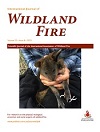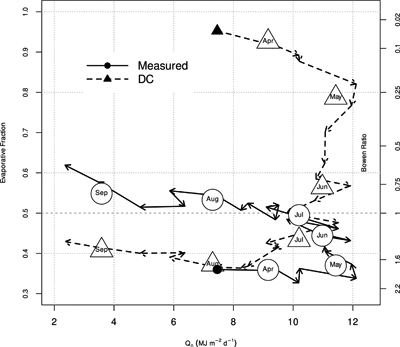
International Journal of Wildland Fire
Volume 32 Number 8 2023
WF23008Severe, large-scale bushfire threatens metapopulation function of quokka (Setonix brachyurus) in south-western Australia
We investigated the effect of a large, severe bushfire on the abundance, occupancy and metapopulation structure of the quokka (Setonix brachyurus), in the southern forests of Western Australia.
WF23008 Abstract | WF23008 Full Text | WF23008PDF (1.6 MB) Open Access Article
WF22166Vegetation-derived pyrogenic carbon degradation and stabilisation in UK peatlands
This research assesses changes to the characteristics of common UK peatland PyC (charcoal) types when exposed at the peat surface over a year. The experiment was set up to simulate a post-wildfire degradation scenario. Early degradation phases and latter stabilisation were observed.
WF22173Fire on a tropical floodplain: a fine-scale fire history of coastal floodplains in the Northern Territory, Australia
Fire plays a critical role in shaping ecosystems in northern Australia, but little is known about how fire impacts local floodplains. Our study examines the similarities and differences between floodplain burning and the much more well researched savanna burning in the region, to better inform floodplain fire management.
WF22173 Abstract | WF22173 Full Text | WF22173PDF (2.3 MB) Open Access Article
WF22062Calculating fire danger of cured grasslands in temperate climates – the elements of the Grassland Fire Index (GLFI)
The Grassland Fire Index monitoring system developed by the German Meteorological Service for application to Central European climates is described. It focuses on the calculation of fuel moisture as the key element of the characteristics of fire behaviour rate of spread and fire intensity.
WF22062 Abstract | WF22062 Full Text | WF22062PDF (1.8 MB) | WF22062Supplementary Material (881 KB) Open Access Article
WF22165Evaluating the Drought Code for lowland taiga of Interior Alaska using eddy covariance measurements
 , Hiroki Iwata
, Hiroki Iwata  , Masahito Ueyama
, Masahito Ueyama  , Yoshinobu Harazono, Hideki Kobayashi
, Yoshinobu Harazono, Hideki Kobayashi  , Hiroki Ikawa, Robert Busey
, Hiroki Ikawa, Robert Busey  , Go Iwahana
, Go Iwahana  and Eugénie S. Euskirchen
and Eugénie S. Euskirchen

We benchmarked the performance of a commonly used wildfire danger rating model against the balance of cumulative seasonal precipitation and evaporation obtained by eddy covariance measurements in boreal taiga forests on permafrost soil. The index was found to overpredict drought by a factor greater than six.
WF22165 Abstract | WF22165 Full Text | WF22165PDF (3 MB) Open Access Article
WF22010Heading and backing fire behaviours mediate the influence of fuels on wildfire energy
 , Matthew B. Dickinson
, Matthew B. Dickinson  , Alicia Reiner
, Alicia Reiner  , Eric E. Knapp
, Eric E. Knapp  , Scott N. Dailey, Carol Ewell, James A. Lutz
, Scott N. Dailey, Carol Ewell, James A. Lutz  and Jessica R. Miesel
and Jessica R. Miesel 
We used a unique pre-, current-, and post-wildfire dataset to investigate which fuels and topography influence wildfire behaviour. We found that forest floor biomass was the primary driver of wildfire energy and had greater consumption under heading fires, relative to backing fires.
WF22010 Abstract | WF22010 Full Text | WF22010PDF (2.5 MB) | WF22010Supplementary Material (943 KB) Open Access Article
WF22076Assessment of wildland firefighter opinions and experiences related to incident medical providers
The issues of trust, respect and access to care in wildland fire medical units has not been previously investigated. The results of this paper indicate wildland firefighters respect and trust medical personnel but there are perceived differences in access to care for some firefighters.
WF22076 Abstract | WF22076 Full Text | WF22076PDF (835 KB) Open Access Article
WF22218Exploring the impact of airtanker drops on in-stand temperature and relative humidity
We explored the effects of airtanker drops on understorey conditions characterised by an increase in relative humidity and decrease in temperature. This micrometeorological environment had a limited effect on fine fuel moisture, but when combined with wetting from an airtanker might prevent surface fires.
WF22218 Abstract | WF22218 Full Text | WF22218PDF (2.7 MB) Open Access Article



